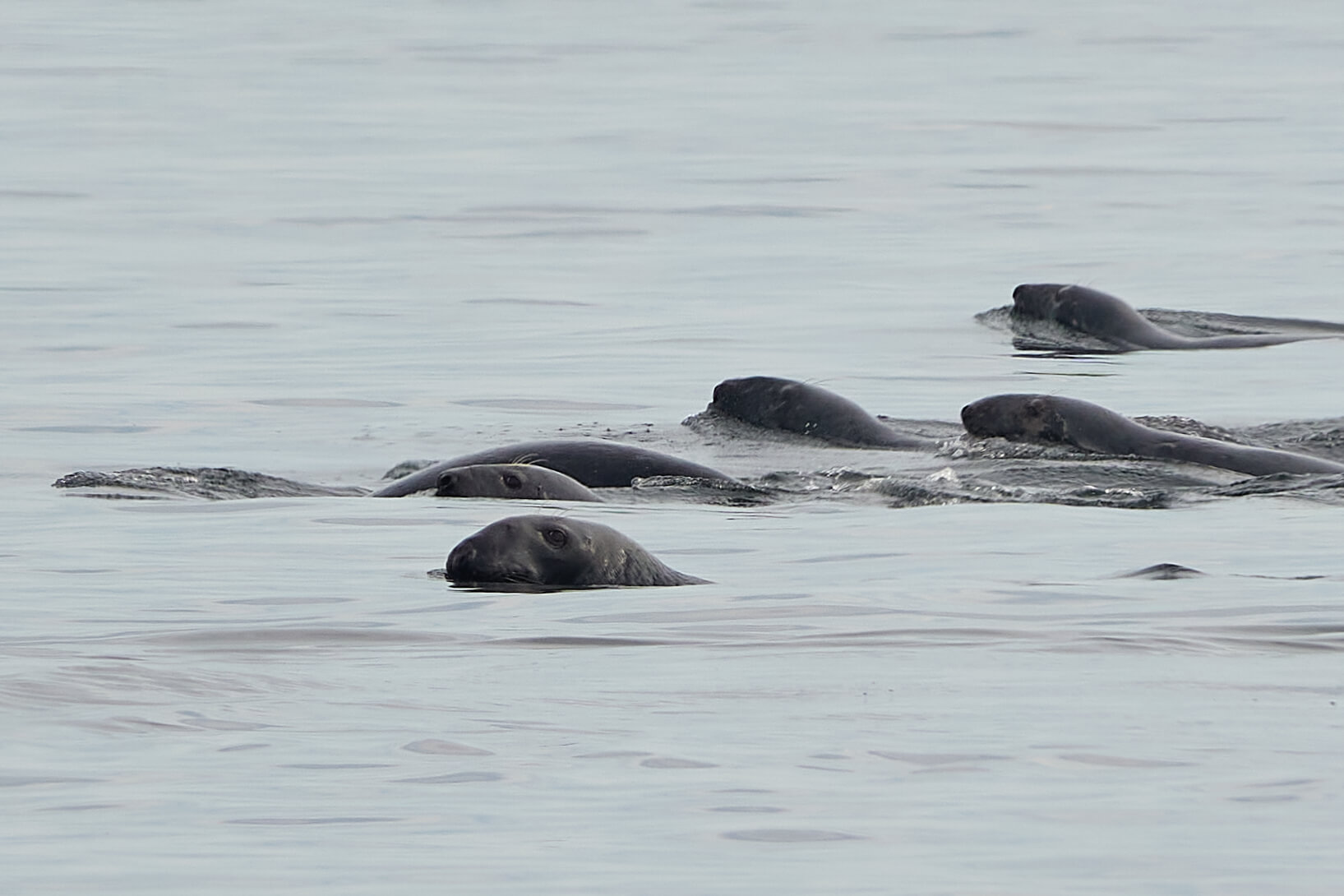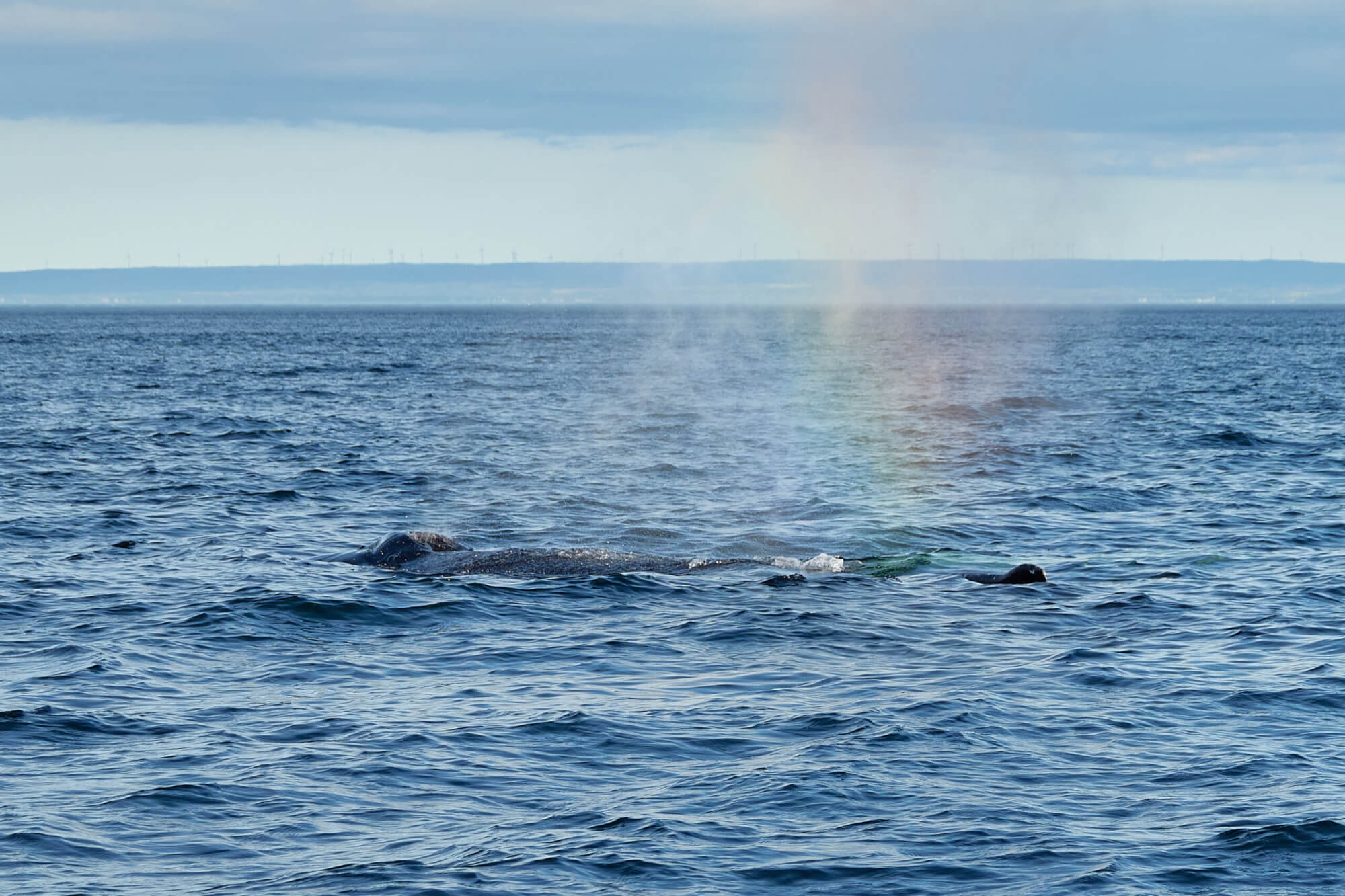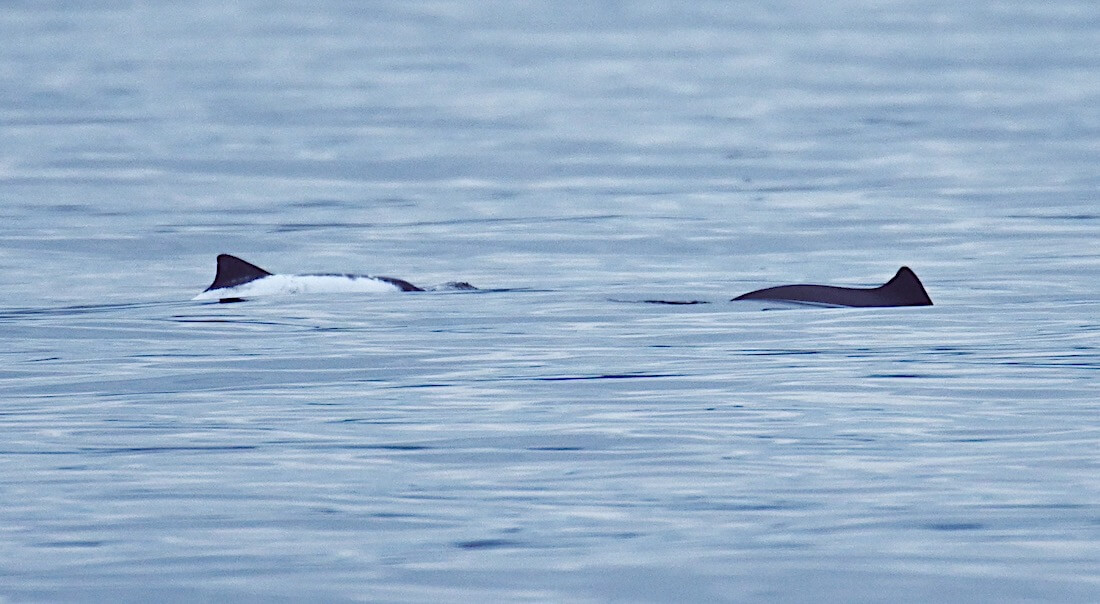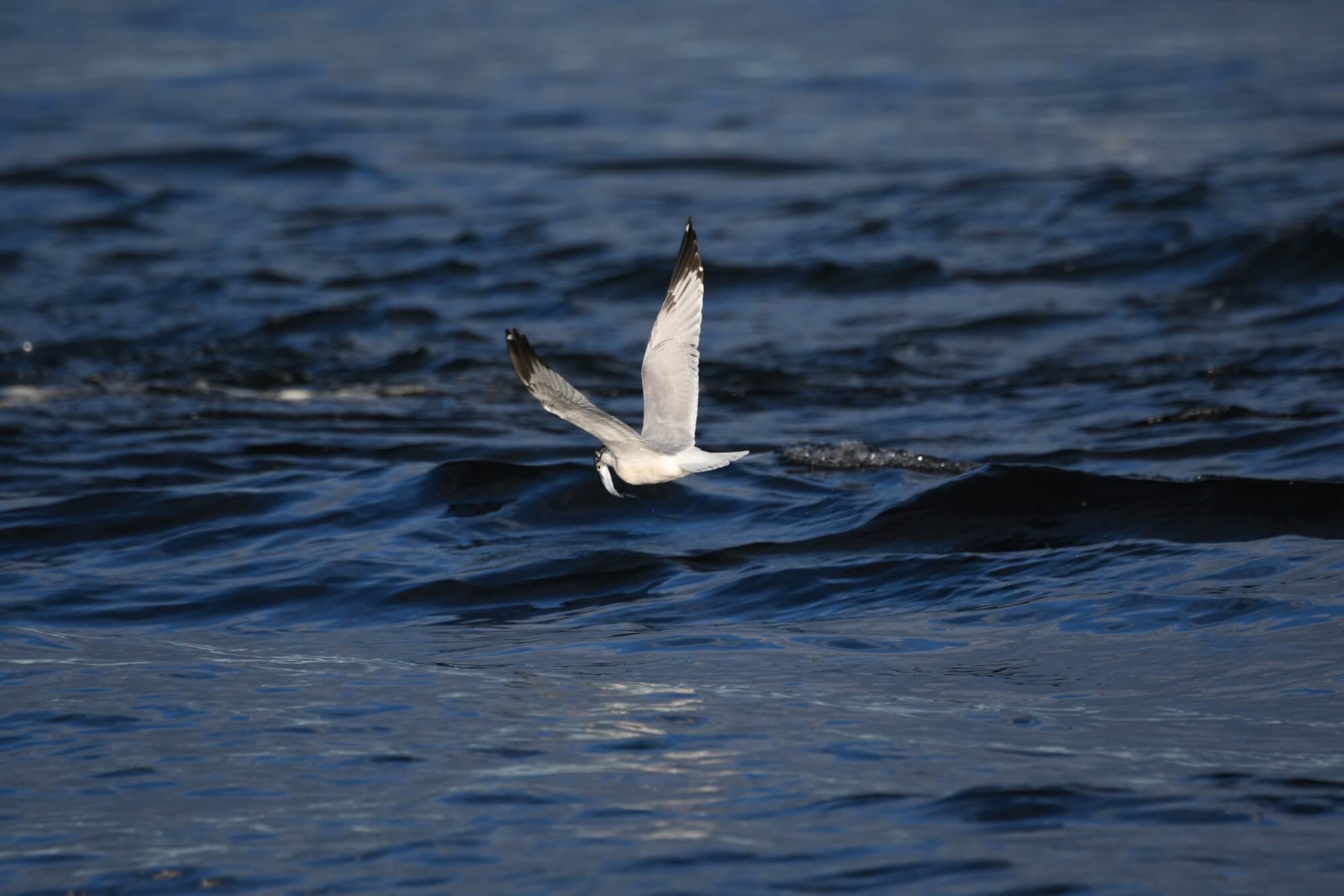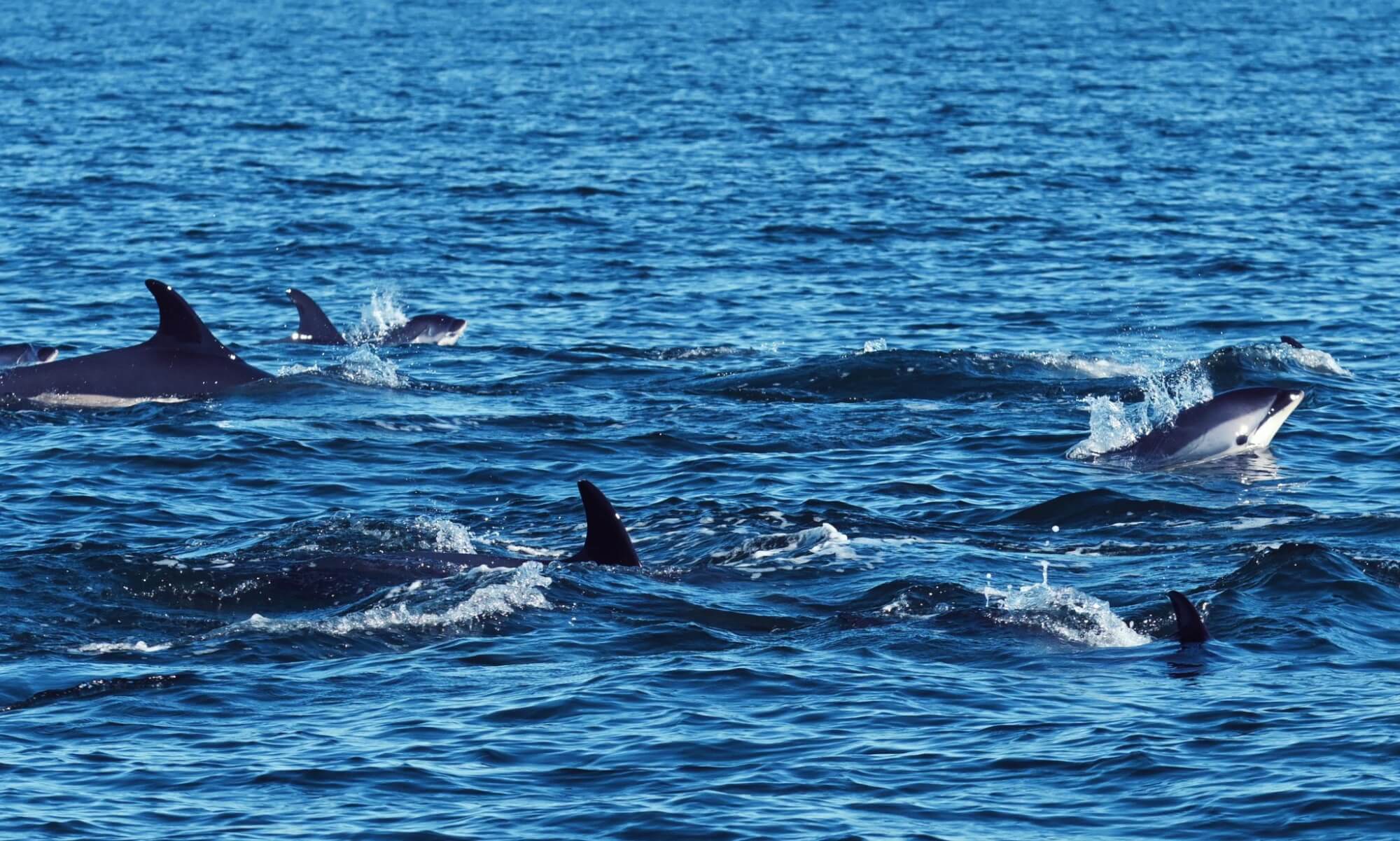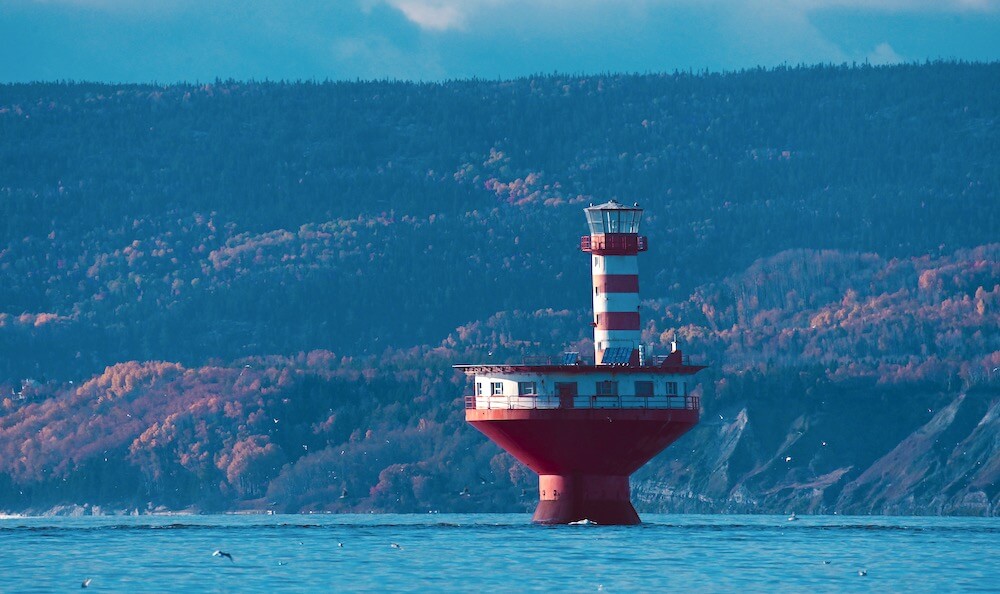Although the cruise season is drawing to a close, marine mammals don’t seem like they’re quite ready to leave! Almost throughout the St. Lawrence, from large rorquals to harbour porpoises, cetaceans are as active as ever and enthusiasts continue to enjoy remarkable sightings.
A parade of marine mammals
In Franquelin, minke whales seem to be quietly departing. Fewer and fewer of them are being observed and they are moving increasingly farther out to sea. For one resident marine mammal enthusiast, the highlight of the week is a fin whale seen on October 15. It parades from east to west, taking a few breaths along the way. A few grey seals swim offshore and seabirds are still abundant. “Several gannets and a few puffins,” reported another observer. “And last week, on October 10, I had the chance to see a dark bird with a very unique flight style: a Wilson’s storm-petrel!” In Pointe-des-Monts, the presence of a humpback whale over the weekend was enough to wow those locals who were lucky enough to see it.
On the Gallix side, four harbour seals were spotted at the mouth of the Sainte-Marguerite River. A stroll along the riverbank provides an opportunity for chance encounters with marine fauna: “Two more harbour seals, not to mention several striped bass jumping out of the water at the mouth of the Sainte-Marguerite River!”
Marine mammal observer and MICS collaborator Jacques Gélineau was able to admire a blue whale for a few breathing sequences off the coast of Sept-Îles. A large spout offshore suggested that a second individual was also in the area. Observing these giants – powerful and majestically elegant – is always a special moment. Undoubtedly, finding oneself in front of one of the largest animals to have ever existed on Earth can make one feel quite small! In the North Atlantic, the blue whale population was decimated by relentless hunting which ended in 1955. Since 2002, the species has been classed as endangered in Canada, which makes each of these rare appearances all the more impressive.
And who was keeping these giants company? A few harbour porpoises, i.e. the smallest cetacean to frequent our waters! Of the marine species that Jacques Gélineau was able to observe this past week, he mentions a hundred or so Atlantic white-sided dolphins that brightened up the Bay of Sept-Îles and the spout of a fin whale erupting in the waters off the Marconi Peninsula. While the harbour seals were close to shore, a few grey seals were seen diving a little farther offshore.
However, rising water temperatures in the St. Lawrence seem to be triggering changes in the species that frequent it and their behaviour, which worries the seasoned observer, as one can read in a recent article in the online publication Ma Côte-Nord.
A curiosity in the estuary
A white back pierces the surface of the water. The first conclusion might be that it is a beluga… The animal is particularly small, however, in addition to showing a dorsal fin. It’s actually a harbour porpoise! This individual probably suffers from leucism, a condition that causes partial or complete discolouring of the skin due to a lack of pigment in certain parts of the epidermis.
Where are the belugas?
According to one resident, while the estuary sector off Saint-Irénée was teeming with belugas two weeks ago, since then it’s come to a complete standstill. She’s not complaining, however, as the joys of living near the water’s edge far outweigh the desire to see cetaceans at all costs.
A little farther downstream, a research assistant from the Group for Research and Education on Marine Mammals (GREMM) exaggerates the quantity of belugas he has seen recently: “There were a million belugas in the 24/7 restriction area!” In his jargon, the “restriction area” refers to a sector at the confluence of the Saguenay Fjord and the estuary where their research permit does not allow them to work due to maritime traffic. As for the impressive gathering of belugas he reports, his colleague is more realistic and explains that they numbered 100 at most. The animals sometimes ventured as far as Pointe Rouge off the coast of Tadoussac. Let us also recall that the St. Lawrence beluga population was recently estimated at between 1,580 and 2,180 individuals.
She also shares a rather funny observation: a young grey beluga hunting fish. By spitting water out of its mouth and onto the water surface, the projections produced by the beluga fall just above the fish and disorient them, allowing the cetacean to attack its prey. The young beluga, however, was robbed of its catch by a much more nimble ring-billed gull!
Rorquals and dolphins
“Offshore is bliss,” often remarks naturalist and wildlife photographer Renaud Pintiaux. Scrolling through the photos that illustrate his well-stocked Facebook page, it’s not difficult to imagine. The autumn colours and the soft light of the shortening days only further embellish the numerous marine mammals that he has the opportunity to photograph. With three fin whales, more than a dozen humpbacks, a hundred or so white-sided dolphins, minke whales as well as the seals that have been roaming the estuary over the past week, there’s no shortage of photo ops!
Ending the season with a bang
It is with a heavy heart and a lump in his throat that Jean Roy, president of Croisières Baie de Gaspé, must end the whale-watching season. October 19 marked the company’s final day on the water, with good numbers of whales still in the area. The day before, Wednesday, October 18, no fewer than seven humpbacks were observed from the boat and around fifteen spouts were spotted from shore. Marine mammals were scattered across the bay, swimming in groups of two or three. Residents of the bay were even treated to a breach from shore! Even if humpbacks were getting most of the attention, we would be remiss not mention the presence of a fin whale, a few minke whales, harbour porpoises and even white-sided dolphins. However, one resident seems to have a beef with the pinnipeds that are preventing her from enjoying one of her favourite pastimes. “It’s impossible to fish!” Between the Saint-Jean River and the Haldimand Bridge, I tallied 24 harbour seals and a lone grey seal. They seemed to be foraging for fish. At Cap Bon-Ami, I spotted a minke whale and grey seals in Gaspé Bay near L’Anse-aux-Amérindiens.”
Où sont les baleines cette semaine? La carte des observations
Ces données ont été rapportées par notre réseau d’observatrices et observateurs. Elles donnent une idée de la présence des baleines et ne représentent pas du tout la répartition réelle des baleines dans le Saint-Laurent. À utiliser pour le plaisir!




